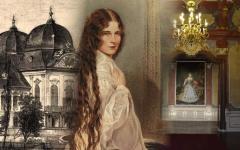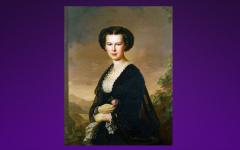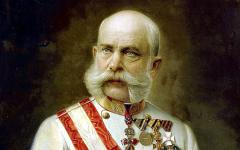It is NOT Elisabeth, neither her Hairdresser in the Photo
Why cannot the mysterious lady in the picture be associated with Elisabeth?
Historian Brigitte Hamman (who passed away at the age of seventy-six, on 4 October 2016) is considered one of the greatest bibliographers of Empress and Queen Elisabeth, and researchers - including me - still have been using her works. First and foremost, I must add that I respect her very much although many of the “facts” in her books have been "outdated" in light of recent researches. However, we should not forget that she published her books nearly forty years ago. In this paper, I will highlight a photo which she described as the following: "Queen Elisabeth with her Hungarian reader, Ida Ferenczy."
This photo with the very same caption is published again and again in the newer Hungarian editions of her book, The Reluctant Empress (the Hungarian title of it is Queen Elisabeth). Even though it was refuted by Brigitte Hamann herself many years ago. In the first Hungarian edition, the date added to the photo is 1891, later it was changed to 1898. Afterward (and since then) it was published in newspaper articles, claiming that this picture is the last and only authentic close-up photo of Elisabeth's old face.
Ida Ferenczy, the reader (conversationalist) of Empress and Queen Elisabeth with an unknown lady in the early 1900s ("the original" picture is wider and taller than the one below).
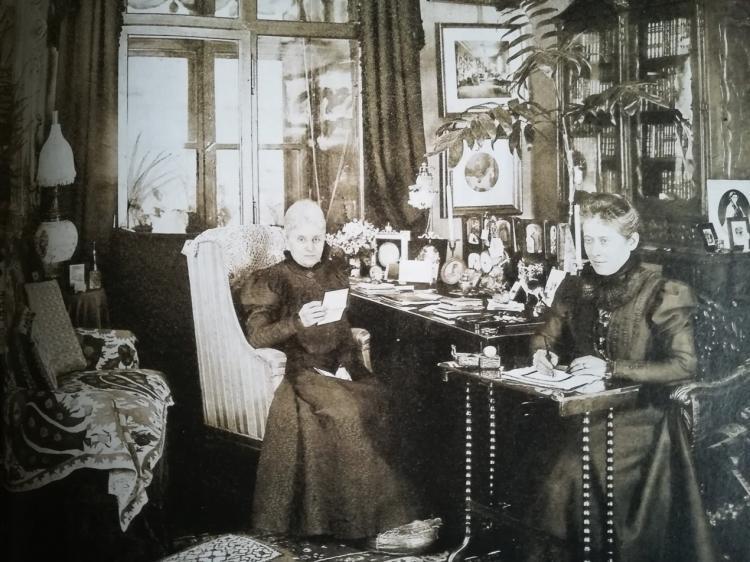
When I saw this photo for the very first time more than twenty years ago, I was very skeptical. I think, and perhaps many will agree with me on this, the lady next to Ida does not look like the Empress at all. Of course, the possible “existence” of such an image itself could be questionable. Elisabeth did not allow herself to be photographed after the year 1866, when the coronation photo session was taken in the studio of Emil Rabending, one year before the Hungarian coronation. There could be other photos taken in year 1867, however they must have been taken before her pregnancy with her fourth child, Marie Valerie was visible. Elisabeth gave birth to Valerie on 22 April 1868.
Several Paparazzi took some photos, in which she is hiding her face behind her fan or umbrella, or only visible from a distance. The Empress's face in old age was unknown even to most of her contemporaries. Elisabeth did not permit anybody to take such a close-up photo. A day before her death, she mentions this fact to Countess Irma Sztáray, her very last lady-in-waiting, the one who was next to her when she was assassinated.
If she had permitted anybody to take a photo of her, we could be sure that her rich hair she had taken so much care of even in her old age, would have been arranged in the most perfect crown braid or let released (as we can see it in the very last painting of her - by Georg Raab, 1879, on the occasion of her 25th wedding anniversary, she is wearing the famous Marie Antoinette set of jewellery). Elisabeth had bangs cut on her forehead in her older years, and the mysterious lady in the photo does not have that.
In 1896, Kálmán Mikszáth, a Hungarian novelist wrote about the Queen in his short story about the Millennium Celebrations. The title of it is “When we Saw her for the Last Time”. In this paper, Mikszáth writes as follows: “Thin, noble features, the hair cut short on the forehead covering that like silk fiber, and on the head, the rich braid rises like the most beautiful crown.”
Baron Ferenc Nopcsa, the Empress' chamberlain, mentions to Ida Ferenczy in his letter of 23 September 1890 that “H. M. is having her hair cut now and wants to run around the evening ”(On the Journay with Queen Elisabeth, page 25). This line must be explained. H.M means Her Majesty. Besides, we can assume that Elisabeth had her bangs (on the forehead) cut since she did not have a haircut. Her hair could reach her heels at that time. The same short hair can be seen in a painting by Gyula Benczúr, commissioned by Franz Joseph (1899). According to the king, this is one of the most authentic portraits of the ageing Elisabeth, who allegedly did not have any gray hairs even at the age of fifty, or even if she did, her hairdresser, Fanny Feifalik deftly disappeared them to spare Her Majesty's nerves.
The lady in the picture in question is not wearing bangs, this fact (among many others) has already ruled out the possibility that the Empress is with Ida Ferenczy in the picture. I must confirm the fact again: it is not Elisabeth next to Ida!
Queen Elisabeth by Gyula Benczúr (1899). The painting is in the property of the Hungarian National Museum.
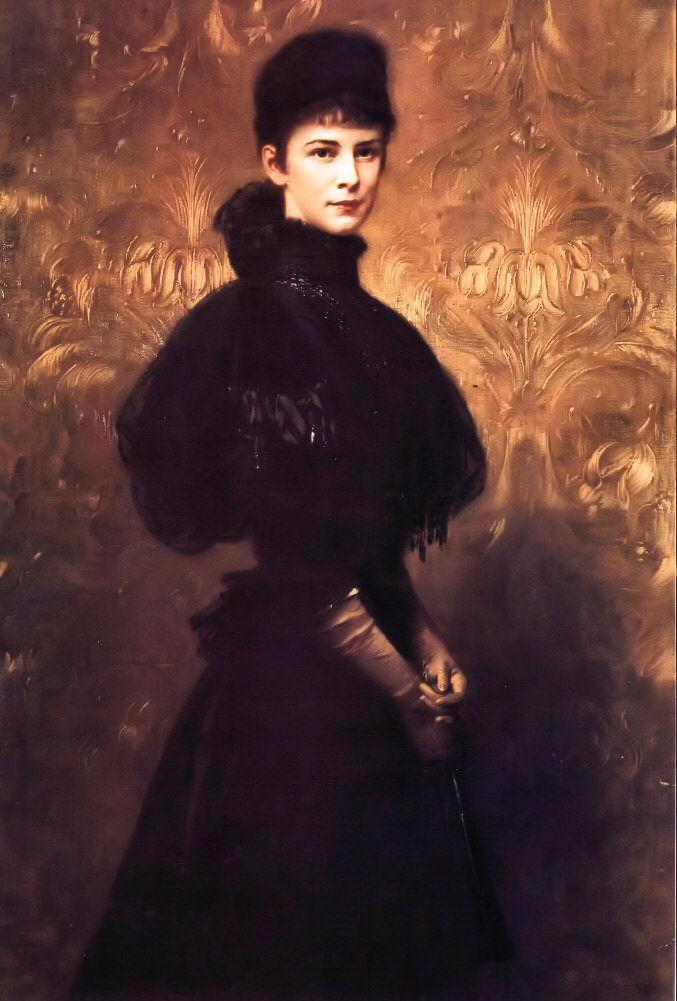
For many years, there was an assumption in Hungary that Elisabeth’s hairdresser, Fanny, could be seen in the photo. This was based primarily on a photo from decades earlier, in which Ida kneels in front of a lady who looks like Fanny. If we magnify and mirror the face of the sitting lady and compare it with the profile of the mysterious lady, we can see some resemblance. However, the sitting lady is not Fanny but Ida Ferenczy's relative, Mrs. Gedeon Fáy Halász.
We can be sure that Ida did not get on well enough with Fanny to manage her correspondence with her. Neither Ida Ferenczy nor Countess Mária Festetics, Elisabeth's lady-in-waiting (and also a confidant), were in good terms with Fanny Feifalik, who took the advantage of her position (that is, no one could make Elisabeth's hairdo better than she did) very cunningly and cheekily. “After a few days like this, I’m completely broken. She (Fanny) also knows this and is waiting for the capitulation. I am a slave to my hair", said Elisabeth to her Greek reader, Christomanos. The Empress' words referred to the fact that if the hairdresser did not like something Her Majesty did or said, she simply reported sick, and refused to comb her until she (the Empress!) reconciled with something. Fanny has become more and more arrogant over the years.
Neither Ida Ferenczy nor Mária Festetics like that Fanny manipulated the Queen. Countess Mária Festetics writes in her diary about Fanny in Gödöllő on January 1, 1873: “What surprised me today is the following. Miss Throckmorton paid a New Year’s visit to the hairdresser, Mme Feifalik (Fanny), whom she treated as if she were a lady and wanted to involve me in this. Of course, I did not go. It does not make any sense. The serving staff is not in a situation to be able to requite my visit. After all, I am not an empress who can honour her with a visit. That is what I told Throckmorton, who thinks that it would not hurt to have a good relationship with her (Fanny Feifalik). - Why? - I do not need nepotism from a maid! How strange people they are...” (Diary of Countess Marie Festetics, 32) Note: Miss Throckmorton was the English governess of Archduchess Marie Valerie. Later, Valerie had a Hungarian governess Contess Kornis (her maiden name: Baroness Maria Vécsey), whom she loved as much that even after her (Valerie's) wedding, she asked her to be the governess of her children. Countess Kornis was in the service of Marie Valerie's family until her death - she was burried in the family Crypt where later Valerie and her husband were as well. I was a great honour, which underlines the fact how much Valerie had liked her.
Photo 1-2. The picture of Ida kneeling in front of a lady, who looks like Fanny. However, the lady is Ida's relative, Mrs. Gedeon Fáy Halász, who Ida respected very much. Because of the picture, the "unknown lady" was associated with Fanny by some Hungarians. Photo 3: The unknown lady. (She is not Mrs. Gedeon Fáy Halász. We do not know her name.) The lady in the photo in which Ida is kneeling and in the one in question is not the same.
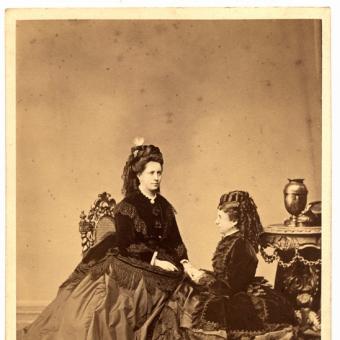
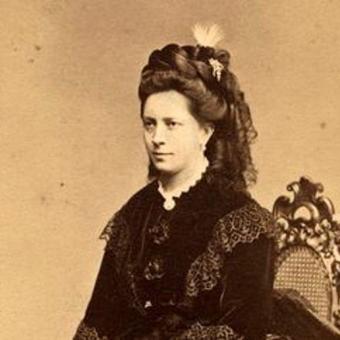
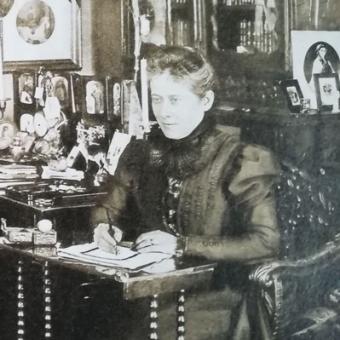
If it is not Elisabeth, nor Fanny, who can be seen in the photo next to Ida Ferenczy?
Historian Dr. Martina Winkelhofer published "Sisis größter Triumph Broschiert - 2017" on the occasion of the 150th anniversary of the coronation. In this, she reveals interesting research findings, which puts an end to speculations. The photo in question was believed to have been taken in Ida Ferenczy's suite in Hofburg. However, the original photograph was nowhere to be found, and only a copy was published in Brigitte Hamann's book. The original photo got into the archives of the Viennese Furniture Museum about five years ago (two years before the publication of the magazine in 2017). Dr. Ilsebill Barta, the scientific director of the museum, immediately noticed that the photo was not taken in the Hofburg. Anyone can see it from the height of the room (in the photo), as the rooms of the imperial residence were much higher, and also in Ida's suite there. The picture was taken in Ida's apartment in Reisner Street, what is more, after the Queen's death. (Ida had to move out from Hofburg after Elisabeth had died.)
Dr. Ilsebill Barta also reveals that the lady with Ida Ferenczy might be her (Ida's) "secretary" - as we would call her today. Ida mentions in one of her letters that since her eyesight had deteriorated, she needed to hire a lady who helped her with managing her correspondence. However, we do not know yet what this lady's name was and what can be known about her. Note: Neither the issue of Kronen Zeitung nor other German and Austrian pieces of literature mention any theory about Fanny relating to the photo.
Conclusively, we must state the lady with Ida Ferenczy is not Empress-Queen Elisabeth, nor Fanny Angerer-Feifalik, but a “secretary” Ida needed to hire to help her with managing her correspondence because her eyesight had deteriorated.
Barbara Káli-Rozmis, researcher of Empress Elisabeth of Austria and Queen of Hungary
All of my articles on this website are protected by copyrights. I kindly ask you not to use them without my permission. My official: website
Acknowledgments: To my friend, Julianna Misinszki-Szabó, for her translations from German from Sisis größter Triumph Broschiert.
The sources of the quotes:Brigitte Hamann. The Reluctant Empress (Hungarian Edition).„Sirály vagyok, sehová se való…” Útközben Erzsébet királynéval (On the Journay with Queen Elisabeth.) – Edited and selected by Mária Tolnayné Kiss válogatta.The Diary of Countess Marie Festetics. Egy udvarhölgy naplójából. Festetics Mária grófnő, udvarhölgy naplójának Budán és Gödöllőn papírra vetett részei – Translated and commented by Mária Tolnayné Kiss.Dr. Martina Winkelhofer. Kronen Zeitung. Sisis größter Triumph Broschiert – 2017 (Page 88-89)Kálmán Mikszáth. Mikor utoljára láttuk (When we Saw her for the Last Time.)
Queen Elisabeth's First Hungarian Summer. The Buda Hills Summer Villa of Sisi and her Children during Cholera. A YouTube video by Barbara Káli-Rozmis. If you want more subtitled videos, please subscribe the channel. (Subtitled in English)

